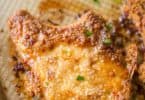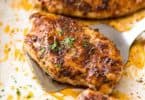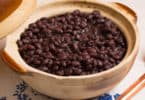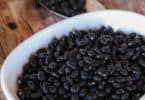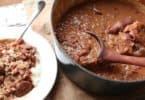One of the toughest tests that a home cook can face is how to cook a turkey breast in the oven without the mean being dry. There is nothing worse than dry, flavorless meat that is so devoid of moisture that it resembles cardboard more than turkey. The only thing that can rival that embarrassment is having to serve the dry turkey breast to guests. Fortunately, using a few tricks and techniques, a dry turkey breast will be a thing of the past.
First of all, to understand why it is easy to overcook and create a dry turkey breast, we have to look at why breast meat is dry in the first place. The main reason that breast meat (and all white meat, for that matter) is dry is because the meat lacks internal fat. Most of the fat content on a turkey breast is located in the skin, with very little actually being inside the meat. In contrast, dark meat, like the thigh and the legs, have more fat running through them internally, which makes them moister cuts.
If not cooked properly, turkey breast can turn out dry because of the lack of fat, so we have to compensate by adding additional moisture. One method of adding moisture and extra flavor is a process called brining. A brine is a mixture of salt, water, and other seasonings that is used to soak a turkey breast. The brining process works by the principle of osmosis. Osmosis is a fancy term from chemistry that simply means that things — in this case salt and water — flow from areas of high concentration (i.e. the brine) to areas of low concentration — the turkey breast. A typical brine is composed of 3/4 cup of kosher salt for every one gallon of water. Enough brine should be made to submerge the turkey breast completely. Brining is also a great way to introduce extra flavor to the turkey breast. White meat turkey can lack flavor and can be boring, but in the brining process, any extra spices that are added to the brine will move into the meat along with the water and salt, creating a moist, succulent, and flavorful roast. Herbs like thyme, bay leaf, and sage compliment turkey nicely and are traditional fall flavors. For a more exotic flavor, spices like star anise, lemongrass, and ginger can be added to give an Asian twist to the roast. Once the water, seasonings, and salt have been mixed, they need to be brought to a boil in order to fully dissolve the salt. After that, the mixture needs to be cooled thoroughly. Once the brine is cooled to room temperature, the turkey breast and the brine mixture need to be placed into a resealable plastic bag so that the brine submerges the breast and is in constant contact with the meat. The turkey breast should be brined in the refrigerator for up to 8 hours. It is important not to over brine the turkey or it will be too salty. Once the breast has been brined, it needs to be removed from the brine, rinsed, and patted dry.
Now that the turkey breast has been properly brined, the cook is presented with another opportunity to add flavor and lock in moisture by use of a compound butter. Compound butters are butters that are mixed and flavored with different herbs and spices. In this case, it’s best to use the same herbs that were used in the brine. Once the compound butter has been made, it can be rubbed all over the breast and underneath the skin. This will provide extra flavor, more moisture, and well as promote browning. The breast should now be placed on a wire rack in a roasting pan and roasted at 350 degrees until an internal temperature of 165 degrees has been reached. Before carving the breast, the meat needs to be allowed to rest on the counter for 20 to 30 minutes in order for the juices to redistribute within the breast.
By following these easy steps, it is possible to have a moist and flavorful roast turkey breast that will be the envy of everyone at the party.
<>


